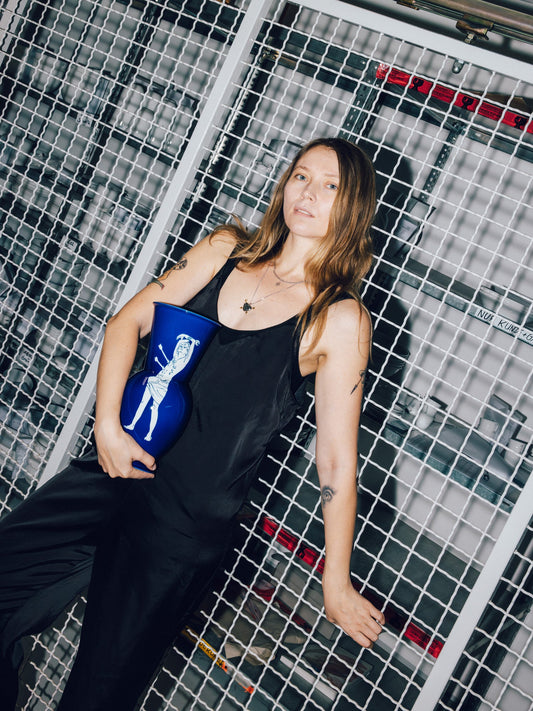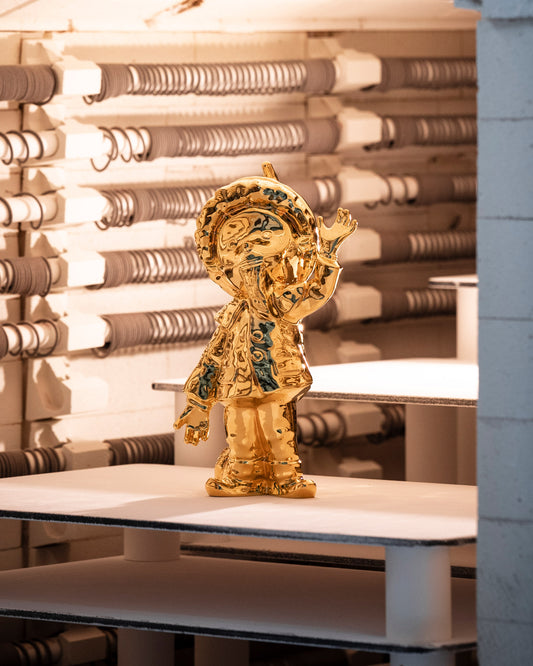TRUDE PETRI AND THE KPM BERLIN
Sculptor, painter and designer - Trude Petri from Hamburg is one of the most important designers of her time. Proof of this success story can still be found today in the Museum of Modern Art in New York. Today you will find out how Petri and KPM Berlin found each other.
Trude Petri was born in Hamburg on August 25, 1906. From 1925 to 1927, she attended the State School of Fine and Applied Arts in Hamburg and began training as a potter. In 1927, she moved to Berlin and worked under Otto Gothe at the Vereinigte Staatsschule für freie und angewandte Kunst (today's UdK Berlin) in the ceramics class. This was Trude Petri's first contact with the manufactory, as Otto Gothe's ceramics class, where she studied, was affiliated with the State Porcelain Manufactory Berlin (KPM Berlin).
From 1928, Petri was initially a freelancer at the Royal Porcelain Manufactory Berlin (KPM Berlin) under the direction of Nicola Moufang. When Günther von Pechmann took over the management of the manufactory in 1929, Petri was permanently employed as a designer. Two years later, the sculptor, painter and designer created the URBINO tableware series. Consistently based on the basic form of the spherical segment, URBINO impresses with its clarity and elegance and is a perfectly shaped classic made of "white gold".
As simple as possible, as elegant as possible
For the design, which KPM Berlin presented to the public for the first time in 1932, Petri was inspired by Chinese rice bowls and flagless ceramic plates from the Italian Renaissance. Despite the historical models, URBINO betrays the influences of the Bauhaus period in which it was created. The versatility of the service has also been emphasized time and again. For example, the lid of the bowl can also serve as a bowl when placed on the handle. KPM Berlin was also the first traditional manufactory with artistic ambitions to successfully launch a completely undecorated service, which represented the Werkbund's aspirations for "pure form" like no other. It is therefore not surprising that the URBINO shape was awarded a gold medal at the VI Triennale di Milano in 1936 and a Grand Prix at the International World Exhibition in Paris in 1937. URBINO is considered a model of timeless porcelain design and is on display at the Museum of Modern Art in New York.
In collaboration with the sculptor Siegmund Schütz, she developed the Arkadia service in 1938 for the manufactory's 175th anniversary. The design is characterized by clear lines; the vessels are cylindrical or conical. The Plates with their sharp break between the rim and the mirror, were created based on the pewter plates of the 17th century. The individual parts of the service are decorated with medallions made of unglazed porcelain. The story of the dream land of Arkadia is told on the artistically cut relief medallions designed by Siegmund Schütz. Arkadia, the landscape of the Greek Peloponnese, was the setting for Hellenistic and Roman pastoral poetry.
The medallions are protected by a layer of wax applied with a brush before glazing. The wax melts during firing, releasing the delicate biscuit porcelain and allowing the other porcelain surfaces to shine in their brilliance.
The ARKADIA collection
Trude Petri developed the shape of the FELDBLUMENRELIEF AUF BORD service together with Gerhard Gollwitzer in 1940. A delicate relief of field flowers and grasses is scattered lightly over the surface. In its generosity, it sets a playful counterpoint to the strict lines of the design. The service charmingly reflects nature in porcelain.
Trude Petri's pursuit of designing porcelain that is as simple as it is elegant led to the creation of the BLUMENBECHER in 1947. To mark the 100th birthday of the important KPM designer, KPM Berlin launched a new edition of the vase, which is as timeless as it is functional, in 2006. The BLUMENBECHER gives every bouquet a sophisticated look without being obtrusive.
In 1967, her last design for KPM Berlin, the “Tea” vase (today CADRE), was produced. At the age of 90, Trude Petri died on February 5, 1998 in Vancouver, where she moved after the death of her husband. But her designs have survived and are still made by hand today and celebrated as design classics.


